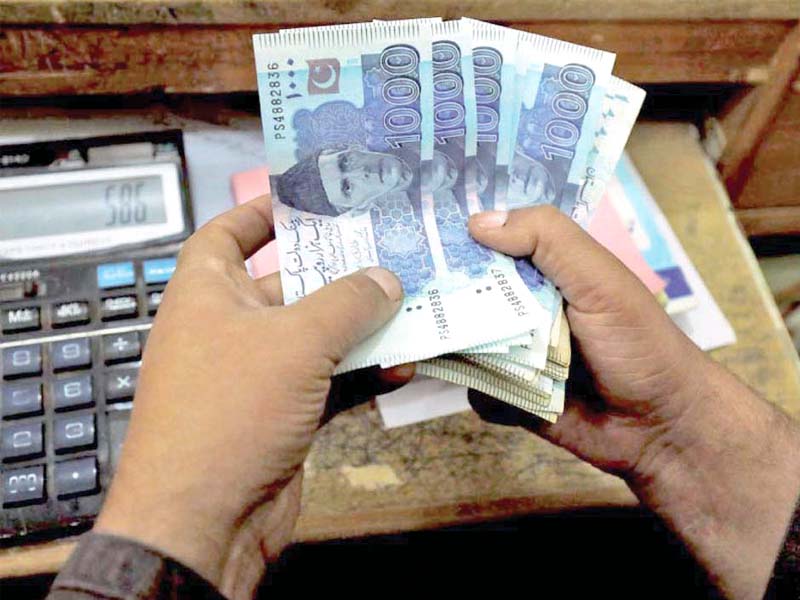
Pakistani currency sharply depreciated by Rs1.52, or almost 1%, to Rs159.83 against the US dollar in the inter-bank market on Wednesday, bringing an end to the currency’s appreciation over the past three weeks.
The rupee had closed at Rs158.31 on Tuesday, according to the State Bank of Pakistan (SBP). “The currency bottomed out at just over Rs158 earlier this week…as it had appreciated 6% from an all-time low of Rs168.43 (hit on August 26),” Pakistan Kuwait Investment Company Head of Research and Development Samiullah Tariq said while talking to The Express Tribune.
He pointed out that the rupee had maintained a steady uptrend for the past three consecutive weeks as everyone continued to sell foreign currencies in the inter-bank market. Now, “the rupee has depreciated sharply by almost 1% in a single day as everyone turned buyers of the US dollar.”
The depreciation of the rupee was expected following a long rally, Tariq stated, adding that the country’s external sector was expected to take off with the reopening of world economies in the near future.
Earlier, AHL Research reported that the rupee was likely to depreciate to Rs161 by the end of December 2020 and to Rs165 by the end of current fiscal year on June 30, 2021.
The research house made the assumption on expectation of revival of imports and a modest growth of 3% each in exports and workers’ remittances compared to the previous year. Tariq said the latest trade numbers suggested no growth in overall imports and exports in the first four months (Jul-Oct) of current fiscal year compared to the same period of last year.
He said imports of energy fell 25% in the four months and the amount saved was utilised for the import of cotton, wheat and sugar. Accordingly, the overall imports remained stagnant.
Similarly, the overall exports remained flat in the four months as the crisis in cotton production resulted in reduced exports of cotton and yarn. It was offset by a notable growth in value-added textile exports including knitwear, bed linen and readymade garments.
The increase in exports of value-added textile goods is good for the economy. “This should attract higher value for value-added goods in export markets and create new job opportunities in the national economy,” he added.
Gold up
Owing to the depreciation of the rupee, the All Sindh Saraf and Jewellers Association (ASSJA) increased the price of gold by Rs450 per tola (11.66 grams) compared to a drop of $13 per ounce (31.10 grams) to $1,875 in the international market.
Published in The Express Tribune, November 19th, 2020.
Like Business on Facebook, follow @TribuneBiz on Twitter to stay informed and join in the conversation.


1725030039-0/Untitled-design-(2)1725030039-0-165x106.webp)















COMMENTS
Comments are moderated and generally will be posted if they are on-topic and not abusive.
For more information, please see our Comments FAQ